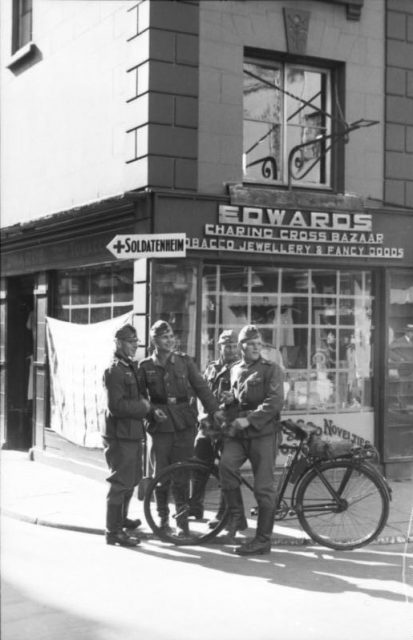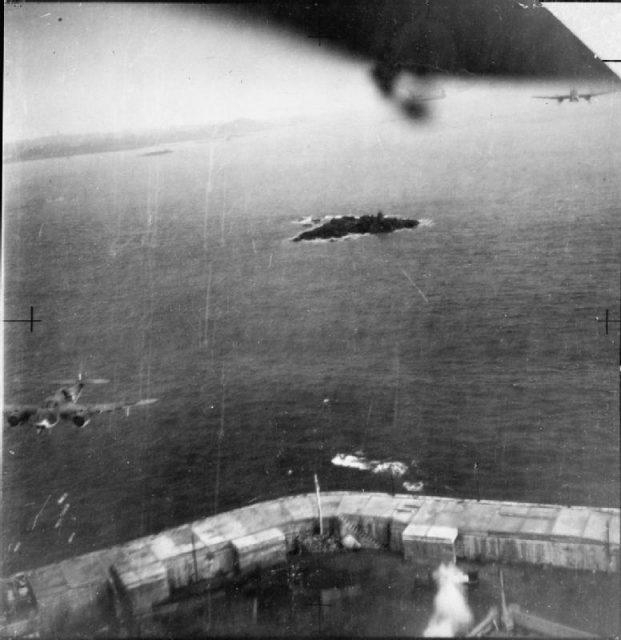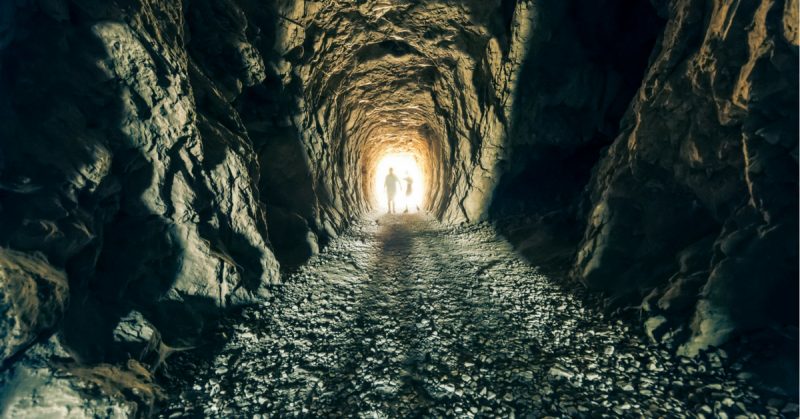When Derek and Maureen Turnbull bought their home on St. Saviour, Guernsey, in the English Channel, they had no idea what they were buying. Under their property were over twelve hundred feet of tunnels, eighty foot deep, built by the Germans in WWII. The property is now for sale by Swoffers Estate Agents, using a sealed-bids method. Nothing under £140,000 (US$198,384) will be considered.
When the Turnbull family found the tunnels, they spent the following five years cleaning them out. The Germans had originally used them for storage, and the Turnbulls found helmets, ammunition boxes, grenades and other Nazi artifacts which were sorted and placed on display.
In 1985 the Turnbulls opened the tunnels as a museum and continued until 2002 when Derek passed away. Maureen was not interested in running the museum without her husband and put it up for sale, artifacts and all. Swoffers agent, Simon Torode, has received notice from several interested parties, wanting to convert the tunnels to a cheese store, a wine storage facility or a mushroom business.
In 2010, a German bunker in Torteval, Gurnsey was sold, also by Swoffers, with the intention of using it for scout groups and education. While the sale amount was not disclosed, the asking price was £155,000 (US$219,639).
When the Germans invaded France in 1940, they saw the Channel Islands as the route for a possible invasion of England. British Prime Minister Winston Churchill felt the islands were not tactically important and did not provide any defense for them. Consequently, the Nazis bombed Jersey and Guernsey killing forty-four people. When they captured Guernsey airfield, they found the island had no defense troops.

Within a few weeks, the Nazi flag was flying over Guernsey, and each home was required to fly a white flag to show submission. The citizens were also forced to adhere to German customs, such as driving on the right side of the road. Rationing, curfews, censorship, and clocks were set to German time. Alcoholic beverages were banned, automobiles were confiscated, crops were seized, and some of the British residents were deported to Germany. All Jews on the Islands had to register, and some were sent to death camps. The smaller island of Alderney was evacuated by force, and then had four labor camps and a chain of bunkers built along its coast.
The Nazis proceeded to build tunnels and erect coastal bunkers on most of the Channel Islands, especially Jersey and Guernsey, using Polish and Russian prisoners of war as slave labor. Forty-one tunnels were built on the island of Guernsey alone. The tunnels belonging to the Turnbull family were intentionally built under and around the church of St. Saviour to reduce the risk of being bombed.
Some of the tunnels are collapsing. In a 1989 interview in the Los Angeles Times, the Rev. Leslie Craske of St. Saviour remarked:
“In Guernsey law, everything that is under your ground is yours, which is not a comforting thought as far as this is concerned. We don’t know whether it will be five years or five centuries. Ultimately, they will collapse – they are bound to.”

He has found cracks in an aisle of the church and several graves in the churchyard show signs of gradual dropping. Earlier in 1989, a garden in Ft. George collapsed.
In June 1944, when the Allies invaded the beaches at Normandy, in France, shipments of food from the mainland were cut off. It affected not only the German occupiers but also the Islands’ citizens. As the residents began to starve, the Red Cross was permitted to bring in food and continued to do so until May 1945.
When the Nazis fled the Channel Islands in 1945, they left everything behind. Most of the tunnels were forgotten about until rediscovered by locals or construction projects.
The preservation group, Festung Guernsey, has published a three hundred page book entitled “German Tunnels in Guernsey, Alderney, and Sark,” documenting the tunnels. It provides information on well-known, unexplored and closed off sites, using newspaper clippings and official documents. It describes the tunnel networks, shelters and where they have collapsed.
